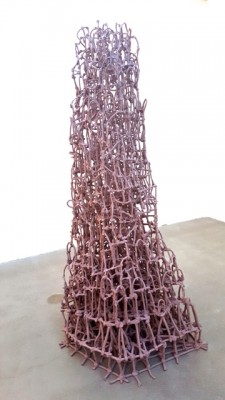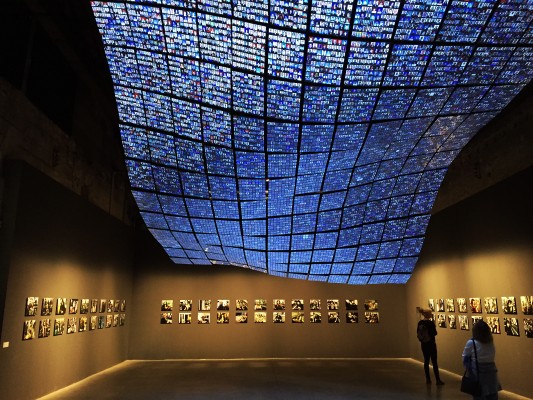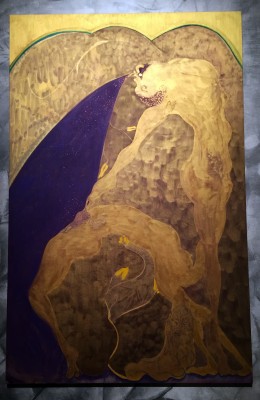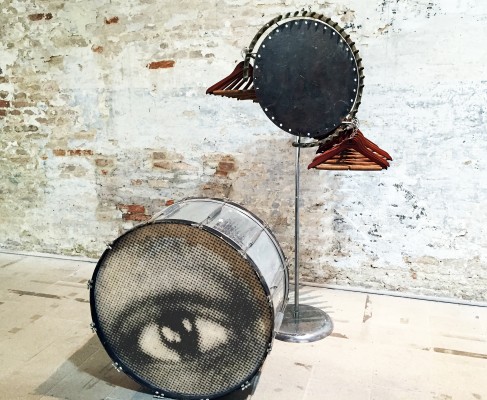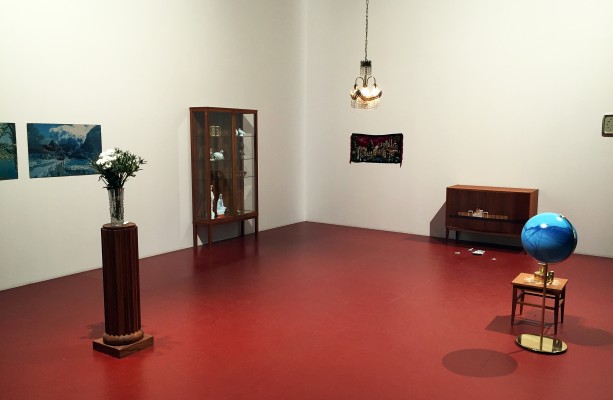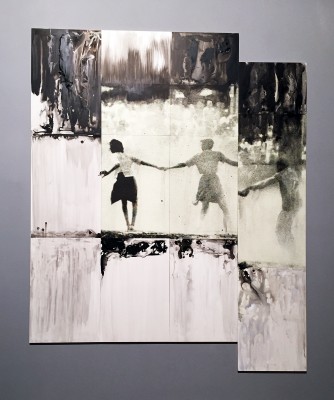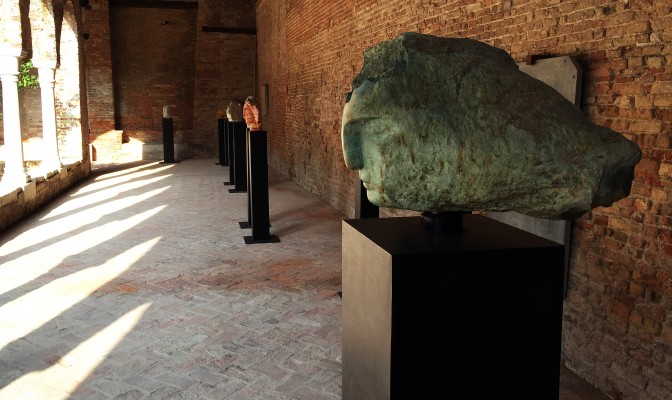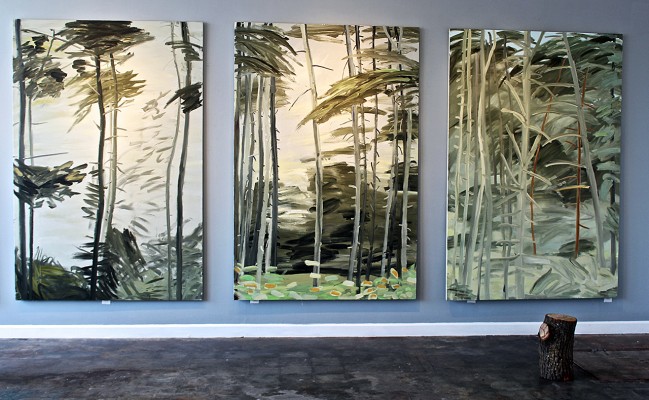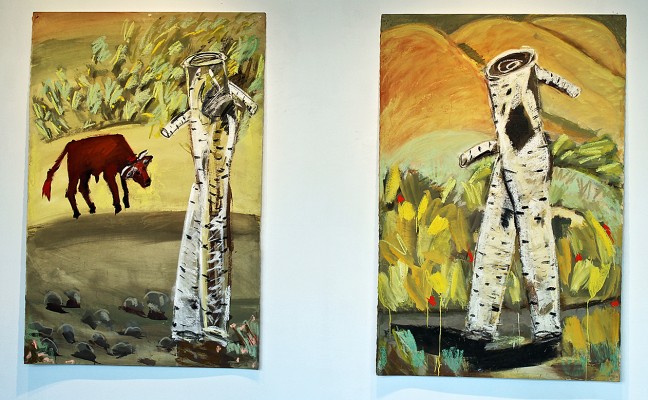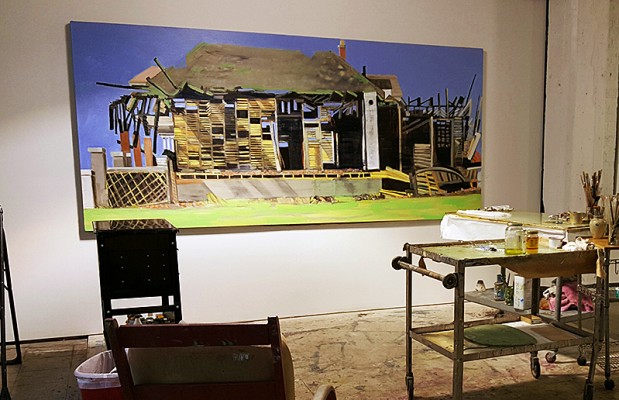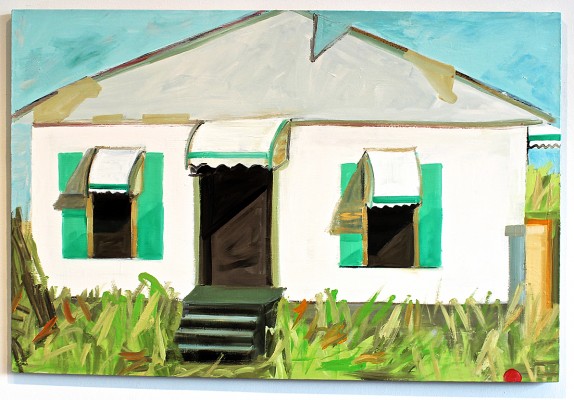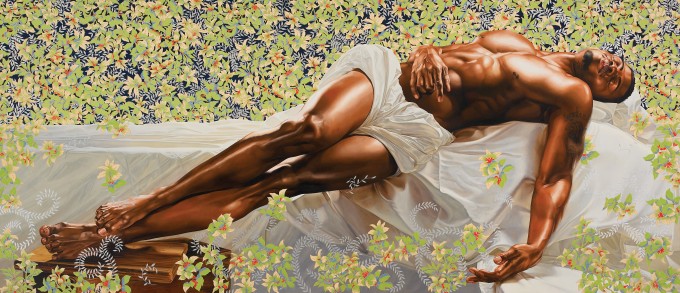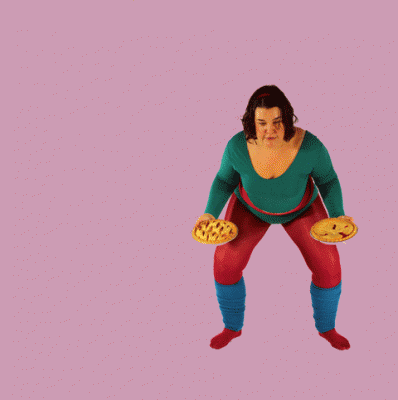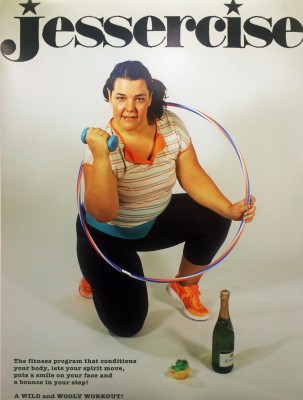At first glance, there is little common ground between the two sides of Susanne Hilberry Gallery; unusual, because both sides are part of a solo show, Miles to Empty, by Detroit native Shannon Goff. Goff has two distinct bodies of work in the show: a playful collection of pastel-shaded ceramic pieces, and an exacting full-scale replica of Lincoln Continental rendered in crisp while cardboard.
“I first started working with cardboard in grad school, as an intermediary material when my ceramic work grew more ambitious in scale,” Goff says, “I needed a material to help me figure out how to scale up while defying gravity.” Indeed, the sheer scale of the cardboard construction (also called “Miles to Empty”) draws the viewer in immediately, but the attention paid to detail really underscores the meticulousness of the hand-building work involved in Goff’s process. This, of course, mirrors the labor-intensive process of assembling actual automobiles—a process that is collectively well understood in the birthplace of the automobile assembly line, but largely invisible to most end users of cars, on the whole.
Once an understanding has been achieved of the importance of hand-building within Goff’s practice, a connection to the ceramic and unfired clay works that populate the other side of the gallery becomes obvious. Long white tables house collections of sculptures that can be seen as three-dimensional iterations of drawings. In fact, with its bright colors, blobs of metallic glaze embellishments, and loosely figurative subjects, the whole of this gallery could be taken as a kind of fine art fridge, covered in a child’s drawings.
This is not to say that Goff’s sculptural work lacks sophistication. What seems gestural and spontaneous is, of course, a deeply challenging question of physics, when it comes from ushering clay in its unfired state through a molding and firing process that leaves it standing strong. “My three-dimensional ceramic drawings saddle somewhere between engineering and experiment. I’ll pose a question to myself, for example, what if I change the line weight? Or what if I play with the density? How many times can I fire a piece before a potential collapse or catastrophe occurs.? If and when such an event occurs, can I salvage it or part of it? One of ceramics main opponents is gravity…I suppose it’s a main opponent of humans as well”
Some of Goff’s works betray the fight against gravity, like “Ka Lae” (2014), in which a top-heavy section of jagged blue peaks has sent the orange superstructure beneath canting off at a now-frozen angle. This reflects Goff’s ambition, with this piece, to see how little material could support a “forest of density.” For the most part, they support surprisingly complex and dense configurations with seeming effortlessness. Although Goff says, of her work in cardboard, “It [is] far easier to engage a large amount of space without all of the problems and limitations of ceramic,” scale with ceramics seems to be a constraint that she has overcome. The crowning achievement of the clay-based works, standing in a gallery on its own, is “Doyenne”—an unfired clay piece that stands 82” high, and was constructed on-site, due to its size and complexity. This piece, which initially began as an attempt to channel and create the aura of Goff’s grandfather, took on a different life and identity as it progressed. “I wanted this piece to be rooted in place, so I decided to abstractly start from a map of downtown Detroit and see what happened,” says Goff. “I even aligned it directionally the best I could. On the third day it grew tall enough to reveal a skirted figure. I knew then that this piece was not my grandfather but the true doyenne of the Detroit art scene. On the 4th day, it looked back and I listened.”
Goff refers, of course, to Susanne Hilberry—the gallery’s founder, and a tireless champion of the Detroit art scene, who sadly passed away amidst preparations to mount Goff’s show, after a long illness. Her passing leaves a hole that cannot be filled, but Goff’s timely monument to her influence seems a fitting send off. From the ghosts of cars past, to the doyenne whose memory lives on in the place she built, Miles to Empty captures a vital mixture of remembrance and hopeful energy. “I guess in many ways it’s about birth and life and death,” Goff says. “And memory. And loss.”



